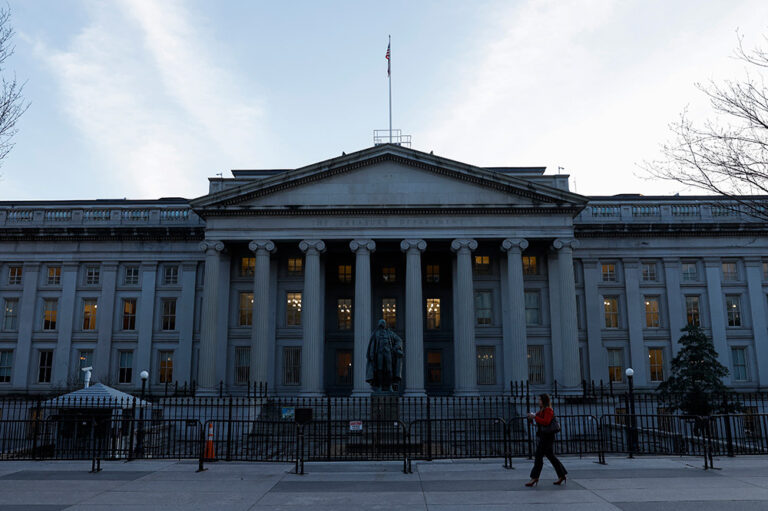Today, the nonpartisan Congressional Budget Office (CBO) updated its baseline budget projections. While the new projections do not contain substantial changes to the outlook that CBO published in January, the data confirms that the U.S. faces significant fiscal challenges in the future.
Federal Deficits Are Projected to Continue Growing over the Next Decade
CBO projections show that, under current law, the U.S. budget deficit will exceed $1 trillion each year beginning in 2022 and total $11.4 trillion over the upcoming decade. Relative to the size of the economy, CBO projects that the deficit will average 4.3 percent of gross domestic product (GDP) over the same time period — significantly higher than the 50-year average of 2.9 percent of GDP. Such large deficits are unusual during a period of economic expansion.
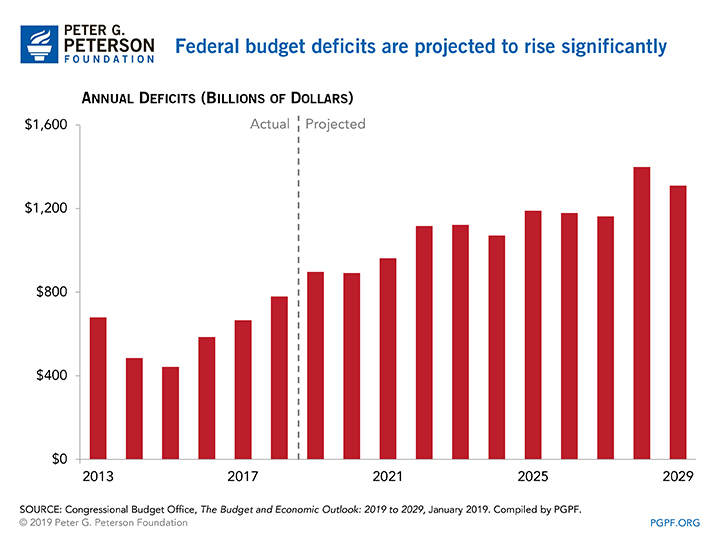
The National Debt Will Rise to Unprecedented Levels
As a result of growing deficits, the national debt will rise to historically high levels in the near future. In 2018, debt held by the public reached 78 percent of GDP. By 2029, CBO projects that the national debt will grow to 92 percent of GDP — the highest level since immediately after World War II. Thirty years from now — in 2049 — the federal debt would reach 147 percent of GDP. These high levels of debt could have severe consequences on the U.S. economy — reducing national savings, crowding out other investments due to higher interest payments on the debt, and limiting our fiscal capacity to respond to future economic downturns.
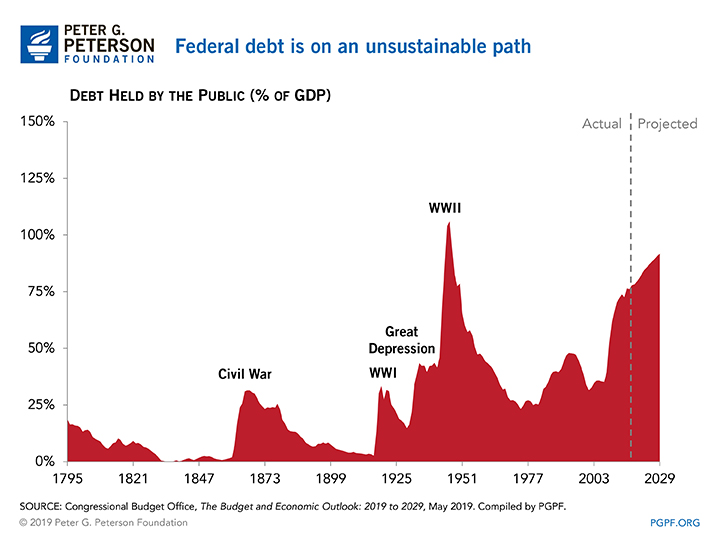
The Mismatch Between Outlays and Revenues Will Only Worsen over the Next Decade
The growing national debt is the result of a structural mismatch between revenues and outlays. In 2018, total outlays were 20.3 percent of GDP while revenues were only 16.5 percent of GDP. CBO projects that under current law, the gap will persist throughout 2029 as outlays grow to 22.5 percent of GDP while revenues rise to 18.3 percent of GDP.
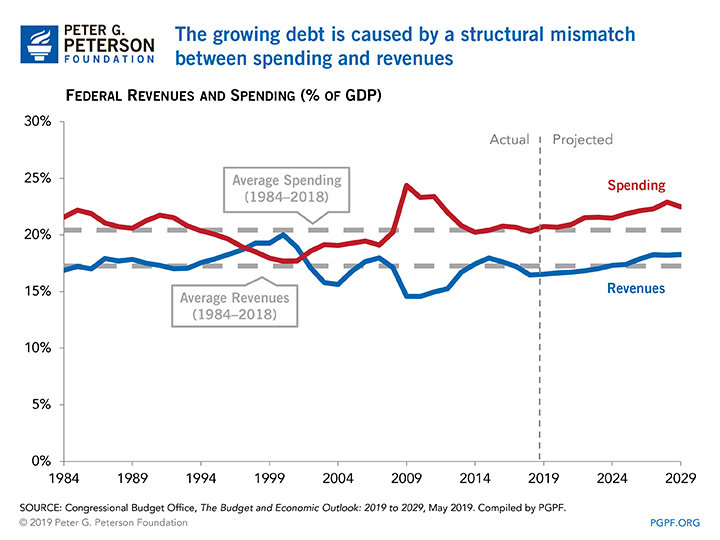
CBO’s Alternative Fiscal Scenario Shows Even Larger Deficits
CBO’s baseline projections are intended to show the U.S. fiscal outlook if current laws remain unchanged. CBO also conducts an Alternative Fiscal Scenario to provide a picture of the fiscal situation under different assumptions than its baseline projections — for example, if funding cuts set to take place in 2020 to comply with caps on discretionary appropriations did not occur or if lawmakers prevented currently scheduled tax increases from occurring. In their Alternative Fiscal Scenario, CBO projects a more rapidly deteriorating fiscal outlook as deficits exceed baseline projections by $4 trillion over the next decade and reach a total of $15.4 trillion over that period.
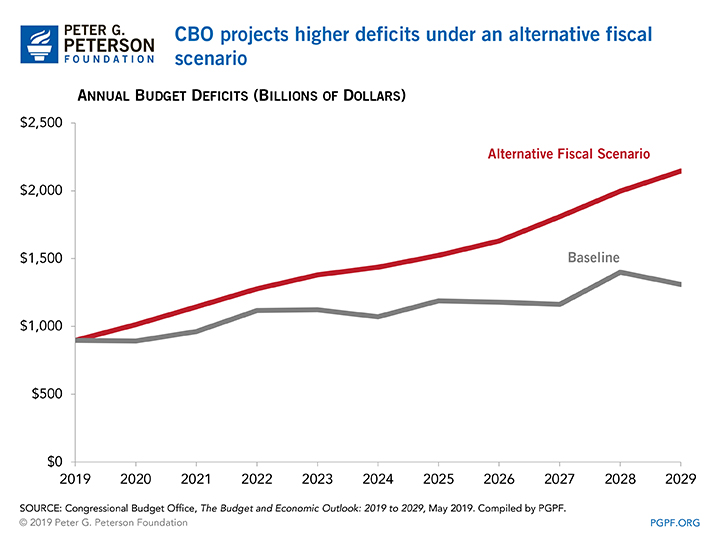
CBO’s updated projections show that the U.S. is facing an unsustainable fiscal future. Policymakers should work to improve our fiscal outlook by stabilizing debt relative to the size of the economy, thereby benefiting all Americans.
Image credit: Photo by Getty Images
Further Reading
The Fed Reduced the Short-Term Rate Again, but Interest Costs Remain High
High interest rates on U.S. Treasury securities increase the federal government’s borrowing costs.
What Types of Securities Does the Treasury Issue?
Learn about the different types of Treasury securities issued to the public as well as trends in interest rates and maturity terms.
Quarterly Treasury Refunding Statement: Borrowing Up Year Over Year
Key highlights from the most recent Quarterly Refunding include an increase in anticipated borrowing of $158 billion compared to the same period in the previous year.


